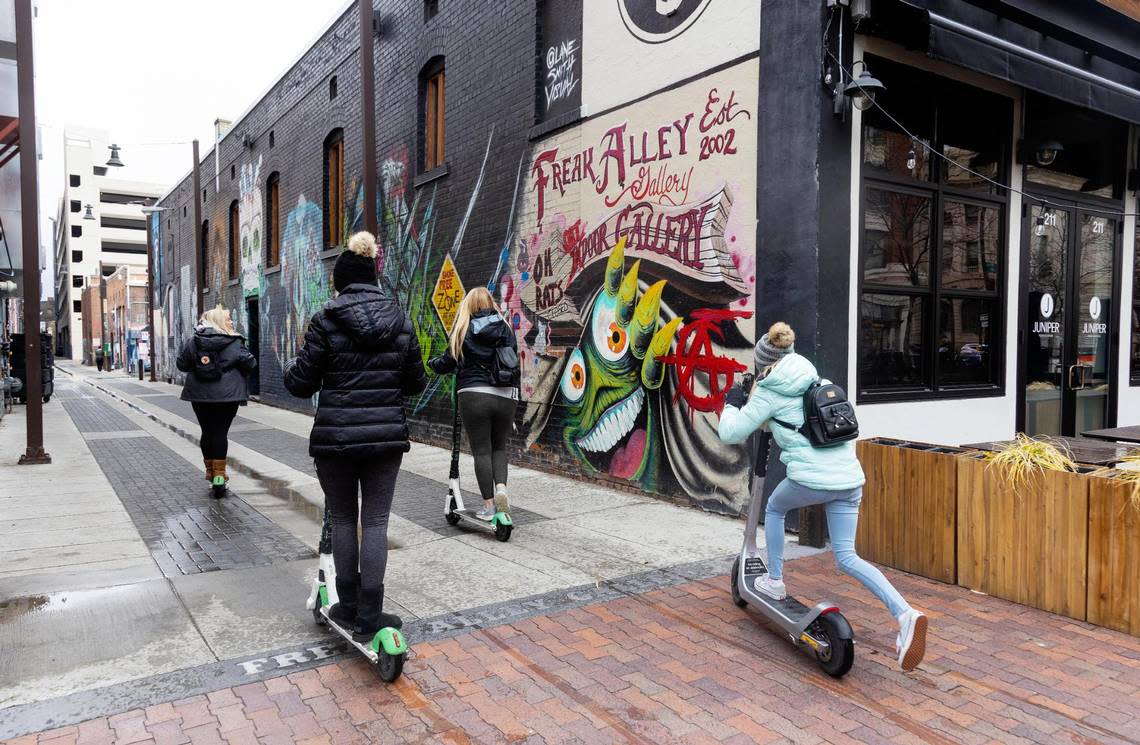Can an electric bicycle rider legally travel in the bike lane? Here’s what Idaho law says
Electric bicycles and scooters have become a part of life in downtown Boise as a popular form of transportation, according to a recent study, leaving behind the old-fashioned mode of simply pedaling and replacing it with high-speed exploits that can sometimes see cyclists going as fast as cars.
But if cars aren’t allowed to cross into a bicycle lane unless entering or exiting driveways, why are e-bikes permitted to fly down the bicycle lane?
In some cases, they’re not.
Electric bikes
There are three classes of electric bicycles as defined by the Idaho State Legislature:
Class 1: An e-bike that only provides assistance when the rider pedals and ceases to assist once the bicycle reaches 20 mph.
Class 2: An e-bike where the motor can be used to propel the bicycle even without pedaling, but it does not assist once the bike reaches 20 mph.
Class 3: An e-bike where the motor only provides assistance when the rider pedals but assists up to 28 mph and is also equipped with a speedometer.
The state legislature defines an “electric-assisted bicycle” as a bicycle equipped with fully operable pedals and an electric motor with a power output of no more than 750 watts that meets one of the three definitions above.
According to Boise city code, Class 1 and 2 e-bikes are allowed not only in all bike lanes around the city but also on sidewalks and crosswalks throughout the city. Both bikes are also allowed on all 25 miles of the Boise River Greenbelt.
Class 3 e-bikes are not allowed on any city sidewalks, crosswalks, bike lanes or the Greenbelt under the city ordinance.
Class 1 and 2 e-bikes are also permitted on approximately 52 miles of motorized trails and primitive roads on the Ridge to Rivers trail network with an Americans with Disabilities Act accessibility permit.
You can apply for an ADA accessibility permit at the Boise Parks and Recreation Admin Office or the Fort Boise Community Center. Applicants must provide a valid state-issued disability parking placard and documentation of their e-bike purchase that outlines the power output of the bicycle.
Electric scooters

Electric scooters can be used in the same places as Class 1 and Class 2 e-bikes: Streets, sidewalks, crosswalks, bike lanes and the Greenbelt.
But unlike e-bikes, e-scooters are not permitted in certain areas around the city: parts of Boise State University, Boise skateparks, the Idaho State Capitol, the Boise Foothills and Kathryn Albertson Park.
Because the e-scooters are stationless, they can be left anywhere around the city. The City of Boise asks that “proper parking etiquette” be followed, including parking the e-scooters upright and not parking on private property or in the way of ADA access or pathways. The city also asks users to park scooters on a concrete surface off the main path when on the Greenbelt.
